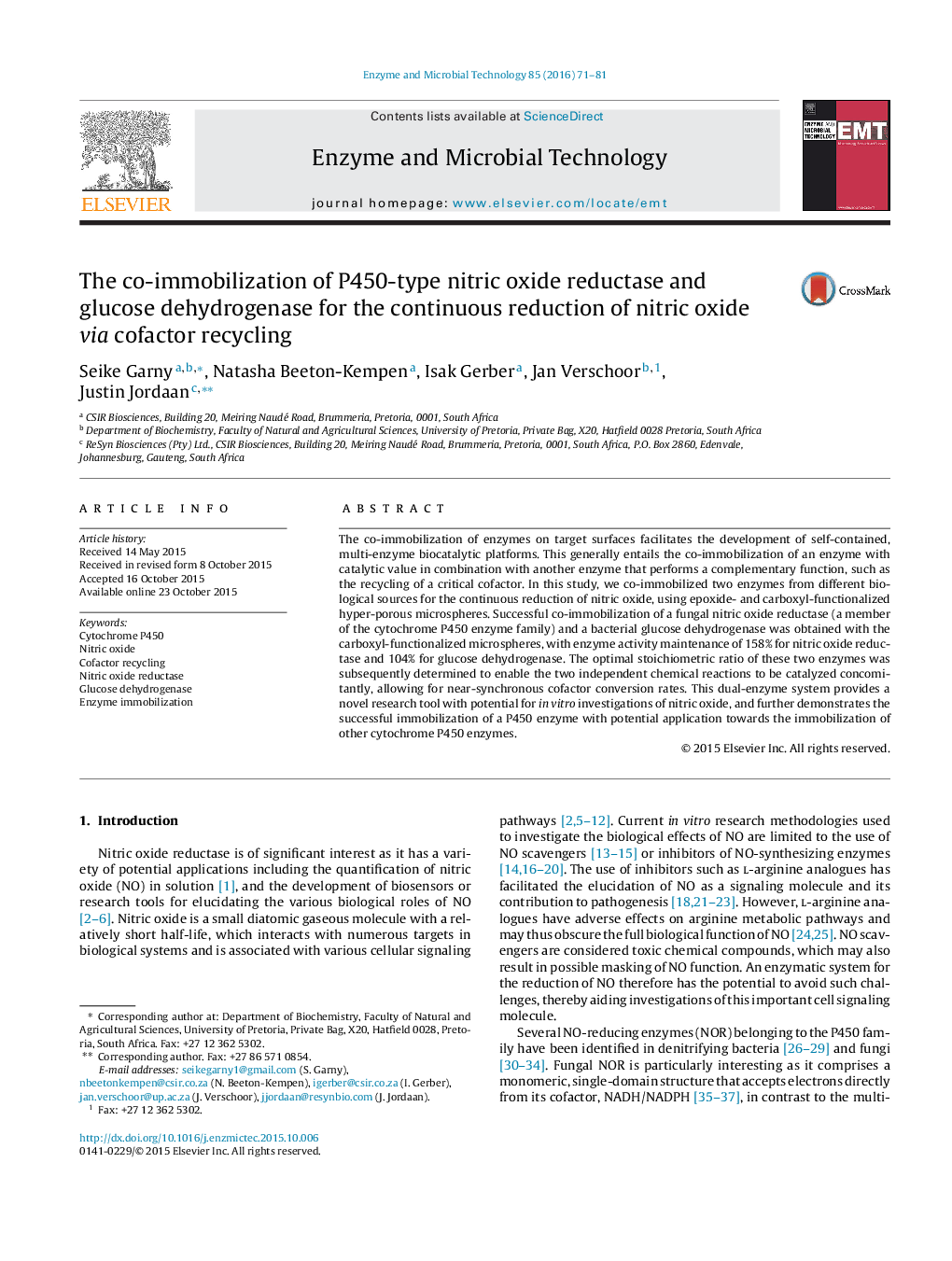| Article ID | Journal | Published Year | Pages | File Type |
|---|---|---|---|---|
| 16874 | Enzyme and Microbial Technology | 2016 | 11 Pages |
•Successful co-immobilization of NOR and GDH onto hyper-porous ReSyn microspheres.•Immobilization on EDC-activated carboxyl microspheres improved enzyme stability.•Co-immobilized enzymes enabled continuous reduction of NO.•Continuous reduction of NO protected cells in vitro against NO cytotoxicity.
The co-immobilization of enzymes on target surfaces facilitates the development of self-contained, multi-enzyme biocatalytic platforms. This generally entails the co-immobilization of an enzyme with catalytic value in combination with another enzyme that performs a complementary function, such as the recycling of a critical cofactor. In this study, we co-immobilized two enzymes from different biological sources for the continuous reduction of nitric oxide, using epoxide- and carboxyl-functionalized hyper-porous microspheres. Successful co-immobilization of a fungal nitric oxide reductase (a member of the cytochrome P450 enzyme family) and a bacterial glucose dehydrogenase was obtained with the carboxyl-functionalized microspheres, with enzyme activity maintenance of 158% for nitric oxide reductase and 104% for glucose dehydrogenase. The optimal stoichiometric ratio of these two enzymes was subsequently determined to enable the two independent chemical reactions to be catalyzed concomitantly, allowing for near-synchronous cofactor conversion rates. This dual-enzyme system provides a novel research tool with potential for in vitro investigations of nitric oxide, and further demonstrates the successful immobilization of a P450 enzyme with potential application towards the immobilization of other cytochrome P450 enzymes.
